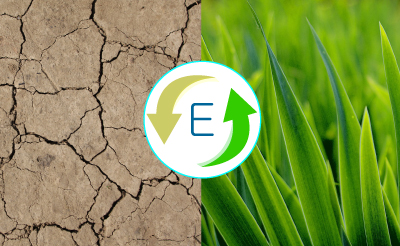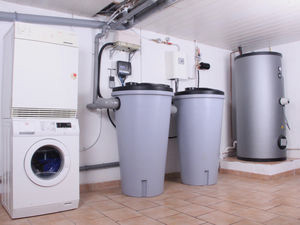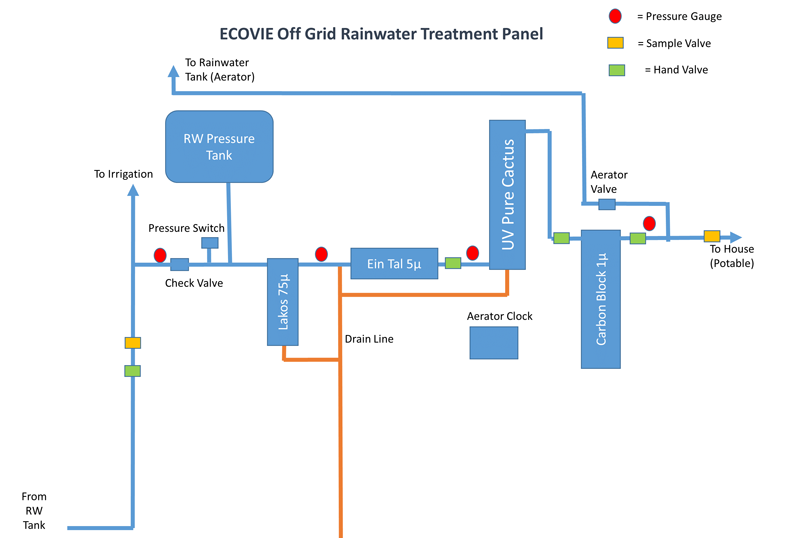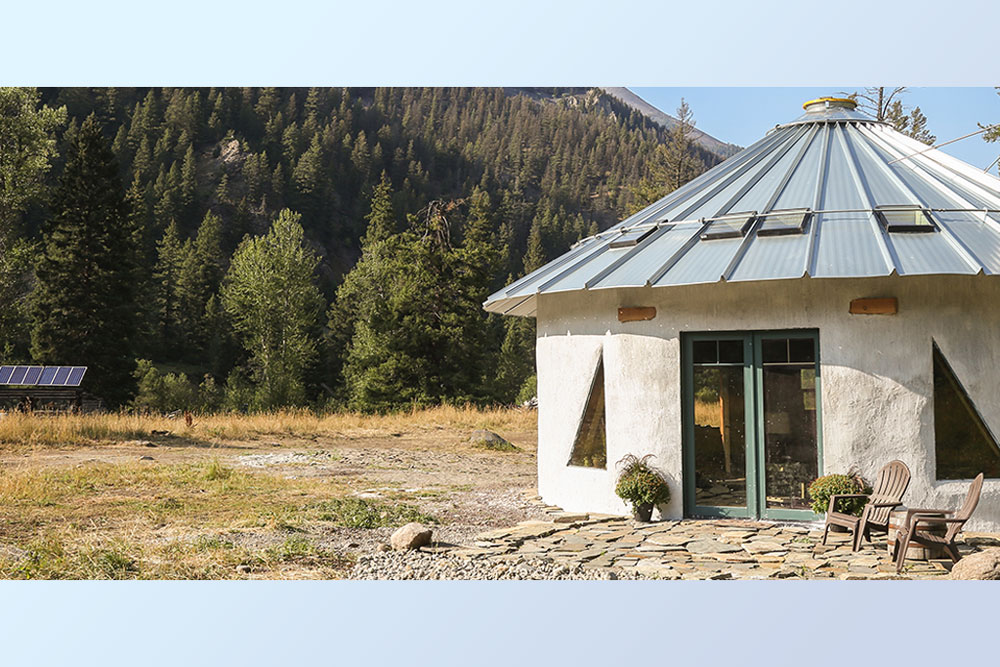We have all heard about the challenges to California’s water supply in the news. Estimates have predicted that the state of California has approximately a 20 year supply of freshwater left of depleting freshwater supply, at current usage rates.
We have read that rainfall in California is actually reverting to historical level of the past millennium and that the relatively abundant rainfall over that corresponds to California’s development boom over the last 100 years is an anomaly! With continued development and food production demands on California, something clearly must be done now. Can you think of a better example of unsustainability?
Managing Scarce Water Resources
 The issues are not isolated to California. Water issues exist around the world and throughout the US. In New Mexico, the water depletion situation is even worse than in California with only a 10 year supply at current usage rates.
The issues are not isolated to California. Water issues exist around the world and throughout the US. In New Mexico, the water depletion situation is even worse than in California with only a 10 year supply at current usage rates.
Groundwater depletion is happening across the western US and efforts to curb water use across the country have been underwhelming. It is true that per capita water use has stabilized over the past 10-15 years, but we need to actually reduce it to levels that truly are sustainable.
The technology exists to do this and here I will describe some (of many) ways this can be done. Granted, these examples may be rather aspirational, high tech steps that not all people will do, but my intent is to show what is possible with today’s technology. In these cases, the idea of installing a fully off-the-grid water system is fully justified both financially and practically. The point is that our current water situation need not cause the dire consequences we are now facing.
Examples of Off The Grid Water Systems
Here, we give three actual examples of Ecovie clients who planned to have off-the-grid water management systems for their residences. All were designed to be reliably off-the-grid regardless of location. But first, let’s define what we mean by off the grid regarding water. An off the grid water system:
- Uses No municipal water supply, even in drought conditions
- Uses No well water, even in drought conditions.
- Manages All wastewater on site.
- Captures the first 1” of rainfall (or more) and infiltrates most tank overflow such that stormwater runoff is eliminated in most conditions.
Our three clients have varying reasons for wanting and indeed needing off the grid water systems. They each have varying combinations of the following reasons:
- Drilling a well is prohibited due to groundwater depletion.
- Running a municipal water line is very costly.
- Running a sanitary sewer line is very costly.
- Being off the grid provides a level of self-sufficiency that is highly valued.
- Being off the grid provides a level of protection against water contamination and disrupted supply.
- Being free of any water or sewer bills which in one case is substantial.
Design Concepts / Solutions:
These are the design concepts common to all three applications. Because of location, water demand, and goals, the actual designs vary somewhat. Here are the common principles we used:
- Water quality needed for each use is matched with the water quality of the source water. That means cleaner source water will be treated to drinking water (potable) standards and dirtier source water will be for non-potable uses. In this case, rainwater fill this role. Less clean source water is treated to non-potable water standards. Greywater and black water fill this role and are matched depending on end use.
- The only possible fresh water supply is rainwater. With no access to a well or to municipal supply, there simply is no other viable source. Each system uses our standard potable rainwater treatment regimen we have proven in many cases over the years.
- The amount of fresh water used is limited by rainfall in drought conditions. We chose the worst drought in 50 years as the design point. If we can provide enough water in these extreme conditions we reason that we can reliably live off the grid in all cases. Here are the drought level annual rainfall levels for each example:
- 32” Rainfall in Drought – Southern climate with 50” average rainfall with little month to month rainfall variation.
- 32” Rainfall in Drought – Midwestern climate with 44” average rainfall and low capture in winter.
- 16” Rainfall in Drought – Southern climate with 30” average rainfall.
- Rainwater is used for all possible uses as long as there enough in drought conditions. This means that the drier climates will require more water recycling than climates with abundant rain. Excess water in non-drought years is used to irrigate and overflow the tanks for passive infiltration.
- All systems use the following:
- PURAIN Pre-filters for best self-cleaning and maximum capture.
- PLURAFIT Calming Inlets
- RAINMASTER Floating Intakes
- Aqualoop Treatment for Grey Water Recycling
- Aqualoop Greywater Treatment Process

Residential Water System Aqualoop in Basement All systems use Ecovie’s standard potable rainwater treatment regimen which consists of sediment filtration to 5 microns followed by UV treatment of at least 40 mj/sq cm., with carbon filtration as a final step. This treatment has been well proven to meet EPA drinking water standards and typically is higher quality than the municipal or well water supply it replaces. The general process flow is as follows:
- Family & Roof Size. For this article, let’s assume all three clients have a 2500 square foot rooftop and a family of 4. In actuality, the household and roof sizes vary.
Now, I will give some detail and contrast the design and needs for each system. All freshwater supply estimates are based upon daily historical rainfall amounts from the driest 12 month period in the past 50 years.

Case Studies & Design Solutions
1) Southern Climate, 32” drought level
While there is abundant rainfall even during a drought and indoor demand is modest, this client wants to be able to keep a large garden and landscaped area.
- We assumed 25 gallons per person per day which is a low level of per capita water usage. This client plans to use low flow toilets with 1.0 GPF and low flow shower heads with 1.5 GPM (5-minute showers).
- Outdoor demand is fairly high with an orchard, several raised bed vegetable gardens, and some landscape to water.
With these constraints, we found that rainwater could not simultaneously meet all indoor and outdoor water demands in drought conditions. Therefore, some water recycling is required. We chose to use greywater recycling of shower and laundry water for toilet use and outdoor watering. The net amount of recycling is around 20%.
The design we settled on it as follows:
- A 6000-gallon rainwater cistern. We determined that only 4,000 gallons is necessary to supply enough water for indoor use so much of this capacity is dedicated to outdoor watering. The added capacity in this case is very cost-effective.
- Standard potable rainwater treatment as described above.
- Aqualoop treatment system to treat bathroom sink, shower, and laundry water for toilet flushing with excess used for outdoor watering. This water will be used preferentially for toilet flushing with treated rainwater as the automatic back up.
- A septic system is used to handle black water from the toilets as well as kitchen effluent (from the disposal and dishwasher). We looked at on-site treatment and composting toilets which are generally greener but decided on the septic tank as an acceptable option for this particular case.
- Excess greywater and rainwater tank overflow will be stored in a separate 2500 gallon HDPE tank mainly for outdoor water. Controls are set up to preferentially use water from this tank for watering and then switch over to rainwater when empty. Note that Aqualoop treated greywater can be stored safely for extended periods unlike less intense greywater treatment which usually requires use within 24 hours.
- Tank overflow and driveway runoff go to a 500 square foot rain garden which then overflows (albeit very infrequently!) to the orchard.
This system meets all indoor uses with ease, even if actual water use is higher than projected. There will also be plentiful water for outdoor uses with at least 100 gallons available daily during drought and usually much higher amounts. Water quality will be excellent. See sample rainwater quality data by clicking here. The single-pass greywater system using Aqualoop has 6 log bacteria removal (99.9999%) and 3 log virus removal (99.7%) which is more than adequate for non-potable use and extended storage. Construction is planned for Q2 2015.
2) Midwestern Location – 30” drought rainfall
This case has a little less rainfall to work with mainly due to lower precipitation in winter and some snow considerations. Outdoor watering demand is much lower than in Case 1 but indoor demand is higher at 40 gallons per person per day. This indoor water demand assumption is typical for our clients with the exception that we will be using low flow 1.5 GPM shower heads. As is very common, all appliances will be water Smart with around 15 gallons per load of laundry and 6 gallons per dishwasher load.
Here is the design for this system:
- A 5,000 gallon rainwater cistern. This is smaller than with Case 1 due to lower outdoor water demand.
- Standard potable rainwater treatment.
- Aqualoop greywater treatment of bathroom sink and shower water for use in laundry and toilets. The water balance shows demand to nearly equal supply with a small daily excess being generated.
- We are currently undecided between a septic tank or on site treatment. The decision will depend upon capital constraints, water needs, and desire to minimize environmental impact.
With this system, we are projecting low outdoor water needs which allows drought level supply to meet all needs with around 40% recycling of greywater for toilets and laundry. As with Case 1, water quality will be adequate. The expected constriction is late 2015.
3) Southern Location – 16” Drought Rainfall
This case is by far the most challenging because of the combination of low freshwater supply (16” rainfall during drought) and relatively high indoor water demand (60 gallons per day per person). The demand for shower water is very high due to some special client needs. This case is in more of a development stage and will be pilot tested before divulging many more details than I can give in this article.
For this case, there is not enough rainwater during drought to meet all typically potable needs. For this reason, rainwater will be used for truly potable applications only, i.e. for all sinks. Any sink effluent will be used as dilution water for the on-site treatment plant with a drought level recycling rate of at least 80%. This level of recycling requires removal of contaminants that build up in the system. The water quality needs to meet EPA drinking water standards but maybe at the higher end of the desired range for some parameters.
The key challenge is assuring continued BOD and TDS control even after multiple recycles. Comparing with previous tests and modeling predicts BOD will remain below 3 PPM and TDS will stay below 500 PPM which is well within needs and will help assure no biological activity.
The design is as follows:
- A 5,000-gallon rainwater tank and standard potable treatment regimen.
- A 180 GPD Aqualoop treatment system.
- An oxidation process to control dissolved solids. This is currently proprietary but think of ozone treatment ozone as an example of an oxidative process. We chose this process over R/O due to water use advantages, ease of use, and operating cost. This process also offers a form of disinfection that R/O does not.
- NJUN on-site WWTP. We chose this process because of the precise aeration and controls to achieve consistent BOD/COD and nitrogen levels. The system will have UV treatment to allow toilet flushing and/or be used in combination with Aqualoop and advanced oxidation.
- A separate rainwater system that collects driveway water as well as tank overflows. The tank will be located under the driveway and will be between 2,000 and 5,000 gallons depending upon irrigation needs. Overflow will go to a rain garden/bioswale.
The expectation is that this system will achieve at least 80% closure in order to be off the grid in the geography of its application. It may have the capability to reach 90% closure which would allow off the grid operation at a much lower rainfall rate of around 12 inches per year. Pending the pilot trial, we will confirm if this level of system closure can be achieved at required water quality levels.
Design Challenges:
All of these system come with some challenges, even the simple rainwater treatment system with single-pass greywater recycling. Here are some things to consider;
- Regulations: Many jurisdictions have regulations that do not allow this type of water system. While the locations of all three of these systems have code that allows for such systems, at least on a limited basis, it is our hope that more geographies will allow these types of solutions as a way to better manage water since they are viable ways to improve water quality and water supply at the same time.
- Maintenance: All of these systems require maintenance. Like a swimming pool or maybe an air conditioning system, the property owner is responsible for keeping the system up and running. Ecovie can provide ongoing maintenance if desired and it is our hope that more firms are trained in specializing in maintaining systems like this as they become more prevalent (which they will!
- Cost: Even though these particular systems are financially justified due to the cost or outright prohibition of the usual alternatives, in most cases availability of subsidized municipal water or unregulated well water makes this type of solution relatively more costly. As water costs continue to rise, there will be more justification for solutions such as this.
The Dream:
We have shown some examples of how water systems can be designed to be completely independent of municipal water or groundwater as well as centralized sewer systems. The dream is that this type of solution becomes widespread enough to make a real difference in our water challenges around the world. Imagine high adoption of some or part of these systems in whole communities such that impact on groundwater and surface water is negligible and in fact start to be replenished to a sustainable level.
I realize that some of these concepts may cause debate. That is intended. I also realize that I have not been able to present a lot of the technical details of how some full off the grid water systems are designed. I would welcome (as always) you feedback and detailed questions.


